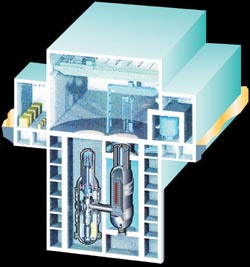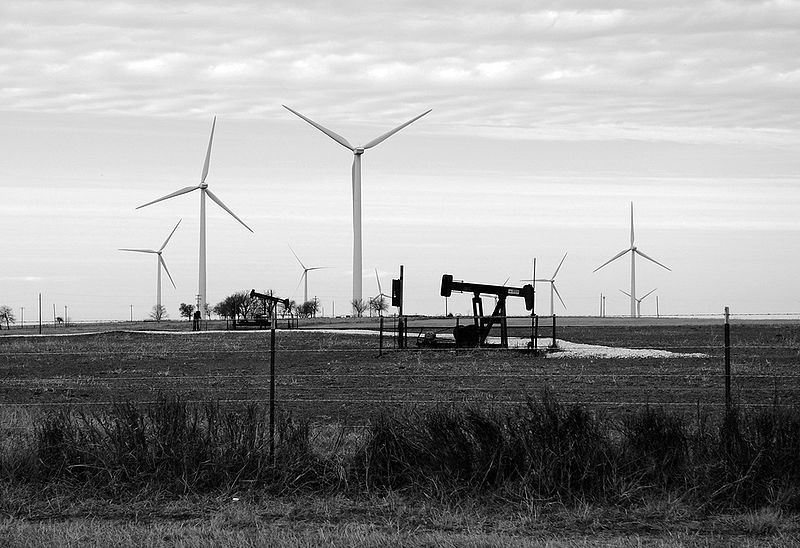Ouch....Please read full from the climateprogress reel
 Climateprogress detailed the escalating costs of nuclear power in my May 2008 report, “The Self-Limiting Future of Nuclear Power,” which noted a “reasonable estimate for levelized cost range … is 12 to 17 cents per kilowatt hour lifetime, and 1.7 times that number [20 to 29 cents per kilowatt-hour] in first year of commercial operation.” On December 31, Time noted that nuclear plants’ capital costs are “out of control,” concluding “Most efficiency improvements have been priced at 1¢ to 3¢ per kilowatt-hour, while new nuclear energy is on track to cost 15¢ to 20¢ per kilowatt-hour. And no nuclear plant has ever been completed on budget.”
Climateprogress detailed the escalating costs of nuclear power in my May 2008 report, “The Self-Limiting Future of Nuclear Power,” which noted a “reasonable estimate for levelized cost range … is 12 to 17 cents per kilowatt hour lifetime, and 1.7 times that number [20 to 29 cents per kilowatt-hour] in first year of commercial operation.” On December 31, Time noted that nuclear plants’ capital costs are “out of control,” concluding “Most efficiency improvements have been priced at 1¢ to 3¢ per kilowatt-hour, while new nuclear energy is on track to cost 15¢ to 20¢ per kilowatt-hour. And no nuclear plant has ever been completed on budget.”
Then a January 2009 study for CP put the generation costs for power from new nuclear plants at from 25 to 30 cents per kilowatt-hour — triple current U.S. electricity rates (see “The staggering cost of new nuclear power“).
Now we have:
New reactors could increase consumer costs by $4 trillion — report
Consumers could pay $1.9 trillion to $4.4 trillion in excess costs if 100 new nuclear reactors are built instead of using renewable energy and energy efficiency to provide the same electricity, according to a new report by a consumer advocate and senior fellow at Vermont Law School.
The report released yesterday said cost estimates for new nuclear reactors are currently four times as high as estimates made at the beginning of the “nuclear renaissance.” New reactors will cost 12 to 20 cents per kilowatt-hour — at least 6 cents per kilowatt-hour more than electricity provided by renewable energy and energy efficiency, the report says.
“The nuclear industry cannot live up to the hope and hype because nuclear reactors are mega projects … that are site-specific and prone to delay and disruption,” Mark Cooper, a senior fellow for economic analysis at the Institute for Energy and the Environment at Vermont Law School and director of research at the Consumer Federation of America, said during a teleconference yesterday.
American shoppers misled by greenwash, Congress told
More than 98% of supposedly natural and environmentally friendly products on US supermarket shelves are making potentially false or misleading claims, Congress has been told. And 22% of products making green claims bear an environmental badge that has no inherent meaning, said Scot Case, of the environmental consulting firm TerraChoice.
The study of nearly 4,000 consumer products found “greenwashing” in nearly every product category – from a lack of verifiable information to outright lies.
Even the experts are confused. Case, whose firm runs its own Ecologo certification programme, admitted he had bought a refrigerator only to find it failed to meet its claims of energy efficiency.
“My refrigerator used twice as much energy as advertised,” he told members of the House of Representatives committee on commerce, trade and consumer protection. The hearing amounted to a crash course into the perils of the new green marketplace for the committee. Congress is looking at how to guide consumers through a thicket of competing claims on so-called greenness.
Record hunger: one billion people are going hungry worldwide
A new estimate by the UN FAO estimates that one billion people are currently going hungry: the highest number in history. Largely exacerbated by the global economic crisis, the number of the world’s hungry has risen by 100 million people.
The economic crisis has led to more hunger due to lower wages and layoffs worldwide. In addition, food prices still remain high after the food crisis that began in 2006: food prices remain 33 percent higher today than in 2005.
Read full from the climateprogress reel







 The EPA issued a report not long ago stating that the U.S. would produce 100 million gallons of cellulosic ethanol in 2010, with 70 percent of this production expected to come from a single company in Alabama called Cello Energy. The EPA might have put a few too many eggs in a single basket this time.
The EPA issued a report not long ago stating that the U.S. would produce 100 million gallons of cellulosic ethanol in 2010, with 70 percent of this production expected to come from a single company in Alabama called Cello Energy. The EPA might have put a few too many eggs in a single basket this time.

 In 2003, researchers at a federal agency proposed a long-term study of 10,000 drivers to assess the safety risk posed by cellphone use behind the wheel. They sought the study based on evidence that such multitasking was a serious and growing threat on America's roadways.
In 2003, researchers at a federal agency proposed a long-term study of 10,000 drivers to assess the safety risk posed by cellphone use behind the wheel. They sought the study based on evidence that such multitasking was a serious and growing threat on America's roadways.


 Since last years
Since last years  A quick question: What's the biggest environmental problem facing humanity today. Is it global warming? One would certainly think so judging from the actions of various governments, which are trying to reduce those manmade greenhouse gas emissions we hear so much about. Is it dwindling energy resources, running up against the limits of agricultural technology in feeding the earth's population, or perhaps diminished supplies of fresh water, without which life cannot be sustained?
A quick question: What's the biggest environmental problem facing humanity today. Is it global warming? One would certainly think so judging from the actions of various governments, which are trying to reduce those manmade greenhouse gas emissions we hear so much about. Is it dwindling energy resources, running up against the limits of agricultural technology in feeding the earth's population, or perhaps diminished supplies of fresh water, without which life cannot be sustained? 









 which included keeping an inventory of greenhouse gas emissions. The only thing left is the Global Marine and Energy division, but nothing that directly tackles climate change. The Global Marine and Energy division contains some of the “company’s most robust portfolio of renewable energy providers,” as a New York Times
which included keeping an inventory of greenhouse gas emissions. The only thing left is the Global Marine and Energy division, but nothing that directly tackles climate change. The Global Marine and Energy division contains some of the “company’s most robust portfolio of renewable energy providers,” as a New York Times 


 "In a nutshell, theoretical models cannot explain what we observe in the geological record," said oceanographer Gerald Dickens, a co-author of the study and professor of Earth science at Rice University.
"In a nutshell, theoretical models cannot explain what we observe in the geological record," said oceanographer Gerald Dickens, a co-author of the study and professor of Earth science at Rice University. 